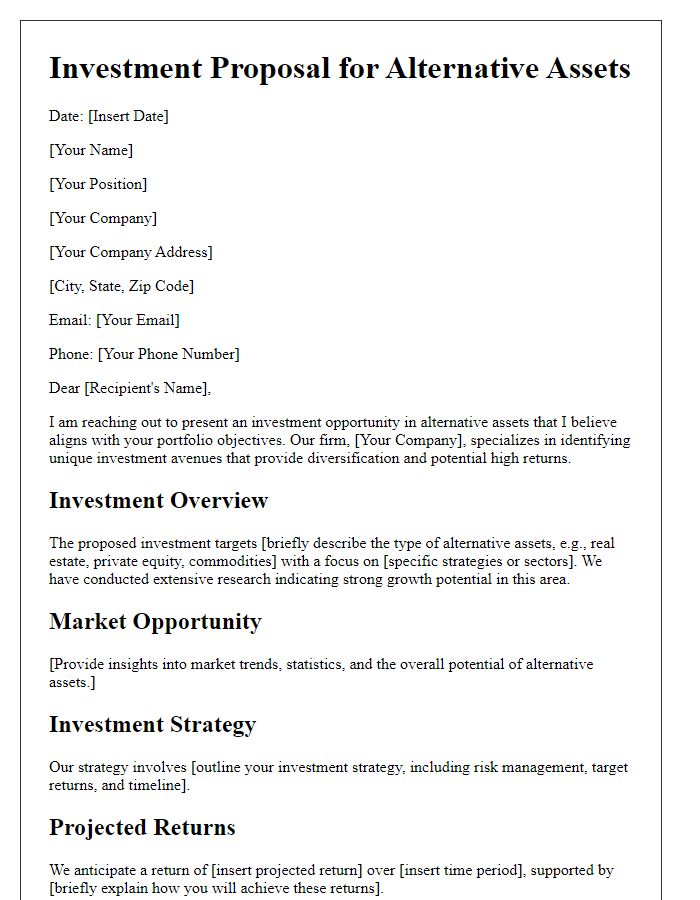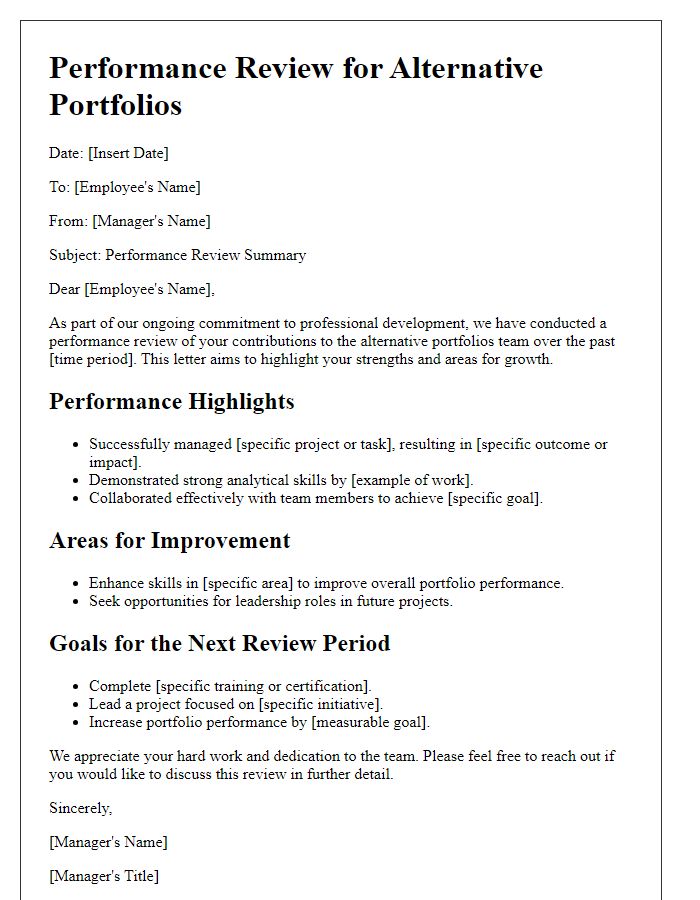Are you exploring innovative ways to diversify your financial portfolio? An alternative investment strategy might be just what you need to enhance your returns while managing risk. By delving into assets like real estate, commodities, or private equity, you can uncover unique opportunities that traditional investments may overlook. Join me as we dive deeper into the world of alternative investments and discover how they can work for you!

Clear Objective Statement
A clear objective statement is essential for outlining the goals of an alternative investment strategy in financial planning. This statement typically includes specific targets such as achieving a 10% annual return over a five-year period while maintaining a low correlation to traditional equity or bond markets. For instance, an alternative investment strategy focusing on real estate funds may aim to capitalize on urban regeneration projects in cities like Austin, Texas, or leveraging hedge funds that utilize market-neutral strategies to mitigate risk exposure. Key performance indicators should be defined, such as liquidity ratios, volatility measures, and absolute return benchmarks, to assess the investment's progress and effectiveness relative to market trends and economic indicators, such as the Consumer Price Index (CPI) and Federal Reserve interest rate changes. Overall, the objective statement serves as a foundational guide for refining portfolio management practices and aligning investment performances with long-term financial goals.
Market Analysis
A comprehensive market analysis of alternative investment strategies reveals significant opportunities across sectors such as real estate, private equity, and hedge funds. The global alternative investment market, valued at approximately $10 trillion as of 2021, is driven by increasing interest from institutional investors seeking diversification. Real estate investment trusts (REITs) offer exposure to commercial and residential properties, generating income streams while mitigating risk through geographic and sector diversification. Private equity, with its focus on acquiring and managing companies, has consistently outperformed traditional stock indices, yielding an average annual return of 14% over the last decade. Hedge funds employ diverse strategies, such as long-short equity and event-driven approaches, aiming to achieve positive returns regardless of market conditions. Environmental, social, and governance (ESG) considerations are increasingly influencing investor decisions in this space, attracting capital towards sustainable and responsible investment opportunities. The evolving regulatory landscape, combined with technological advancements in financial services, enhances accessibility and efficiency for investors engaging in alternative assets.
Risk Assessment
Alternative investment strategies often involve assessing various risks to ensure optimal financial returns. Key risks include market risk, which refers to potential losses due to declining prices of underlying assets, often influenced by economic events or market sentiment fluctuations. Liquidity risk indicates the potential difficulty in selling an asset without significantly impacting its price, a crucial factor especially for real estate investments or private equity. Operational risk encompasses failures in internal processes, such as errors in executing trades, often seen in hedge funds. Additionally, regulatory risks, stemming from changes in laws governing investments, can impact compliance and operational costs. Understanding these risks fosters more informed decision-making, allowing investors to balance reward potential against their individual risk tolerance.
Diversification Strategy
Alternative investment strategies, like the Diversification Strategy, focus on mitigating risk through the allocation of capital across various asset classes. This approach can include investments in real estate, hedge funds, commodities, and private equity, aiming for a balanced portfolio. Historical data demonstrates that a well-diversified portfolio can reduce volatility, with studies indicating a potential 20-30% lower risk compared to traditional stock and bond investments. By strategically diversifying assets in different sectors or geographical regions, investors can capitalize on market fluctuations and enhance overall returns. For example, incorporating assets like cryptocurrencies or international stocks can provide exposure to growth opportunities in emerging markets, previously unattainable through conventional investments. This strategy not only aims to protect against market downturns but also seeks to capture positive performance across various investment channels.
Performance Metrics
Alternative investment strategies often focus on non-traditional assets, including private equity, hedge funds, real estate, and commodities. Performance metrics evaluate these investments, determining their effectiveness and profitability over time. Common metrics include IRR (Internal Rate of Return), which measures annual growth, and the Sharpe Ratio, which assesses return relative to risk, aiming for values above one, indicating better risk-adjusted performance. Additionally, tracking the diversification benefit through correlation coefficients with traditional asset classes highlights overall portfolio resilience during market volatility. Ongoing monitoring of these metrics, along with performance benchmarks specific to asset types, ensures that investment strategies align with overarching financial goals and adapt to changing market conditions.













Comments